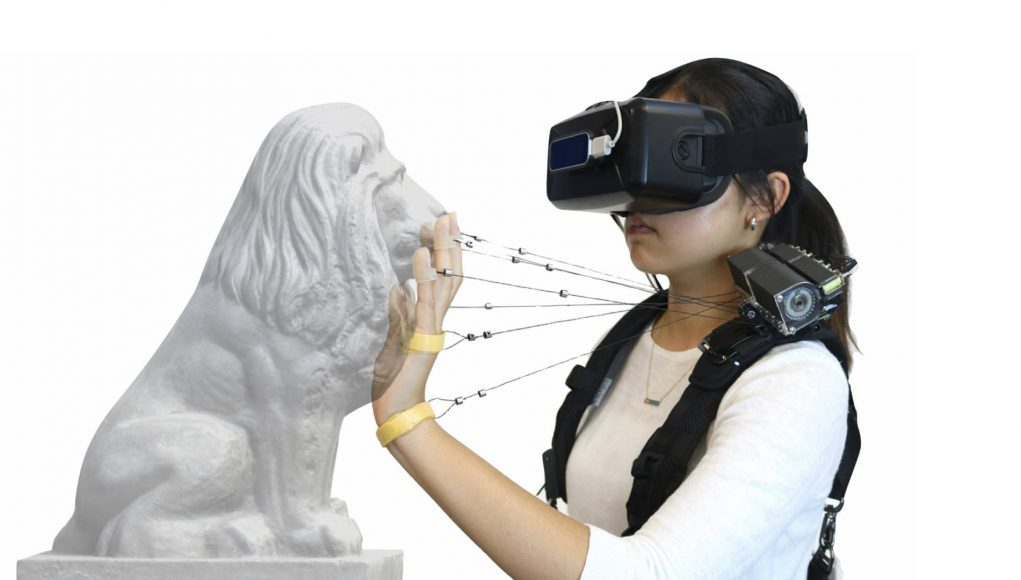Carnegie Mellon University researchers published a paper recently that proposes a novel VR haptic feedback device, which unlike strictly hand-worn haptic devices, lets you feel objects in VR with a measure of ‘positional’ resistance.
Researchers Cathy Fang, Yang Zhang, Matthew Dworman, and Chris Harrison call it Wireality. It’s basically a self-contained, shoulder-worn device that allows you to feel resistance in your hands and fingers when you encounter larger obstacles in VR.
Retractable wires connect to your finger and hand joints, and are locked into place by shoulder-mounted solenoids when you encounter an object, letting you ‘feel’ the solidity of the object in its relation to the user.
Using a sort of exoskeleton (or exotendon) isn’t really a new concept when it comes to haptic gloves, as gloves such as HaptX and Dexmo are similarly designed to lock your joints in place, however this is the first we’ve seen that actually takes that self-contained concept and pushes it further into the third dimension. The gloves listed above create resistance and lock your individual fingers in place, which is helpful for manipulating small, singular objects, but not when it comes to larger objects such as walls, railings, and furniture. With both traditional motion controller buzz haptics and finger-only force feedback gloves, larger objects are essentially immaterial.
It’s an interesting concept, although there are admittedly some drawbacks. The researchers highlight Wireality’s inability to provide resistive force in any other direction than perpendicular to the wearer’s body. Also, Wireality can’t fully simulate small ‘two-stage’ virtual devices such as buttons and switches because the shoulder-based solenoids can’t reposition themselves without first being released, meaning you won’t be able to feel a button or piano key and naturally depress it like you might in reality.
That said, the researchers have developed a lightweight, low-power device that they were able to create for only $35; one of the key design goals was to make it fit for consumers. Whether the design catches on, or finds itself integrated into another haptic controller still remains to be seen.
If you want a more in-depth look at Wireality, check out the full research paper here.







